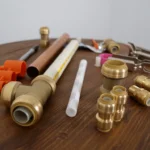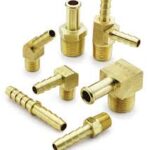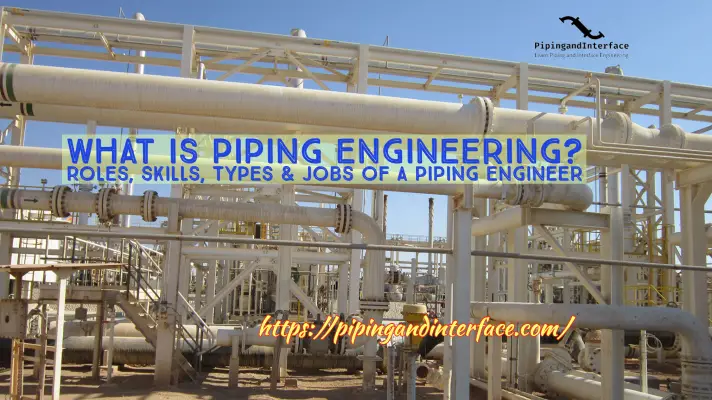Pipe stress analysis is a type of engineering analysis that involves examining the stresses and strains experienced by pipes and their associated components, such as fittings, supports, and flanges. This analysis is usually conducted for piping systems that are subjected to high temperatures, pressure, or other external loads.
The primary goal of pipe stress analysis is to ensure that a piping system can withstand the operating conditions it will experience during its lifetime without failing. This involves evaluating the various loads and stresses that the system will be subjected to, such as thermal expansion, weight, pressure, and external forces, and determining if the pipe and its components are capable of withstanding these loads without excessive deformation, buckling, or rupture.
The analysis generally involves using specialized software packages to model the piping system and apply various load cases to simulate its behavior under different loading conditions. The results of the analysis are then used to design or modify the system’s components to ensure that they meet the necessary safety and performance requirements.
Why is pipe stress analysis important?
There are several reasons why pipe stress analysis is performed. The main objectives of pipe stress analysis are:
Safety: The primary reason for performing pipe stress analysis is to ensure the safety and reliability of the piping system. A thorough analysis can identify potential failure modes and help engineers design a system that can withstand the stresses it will encounter in operation.
Compliance: Many industries have regulatory requirements that dictate the design and operation of piping systems. Pipe stress analysis can help ensure that a system meets these requirements, reducing the risk of non-compliance and potential fines or legal action.
Cost savings: A well-designed piping system that has undergone pipe stress analysis can reduce maintenance and repair costs over the life of the system. Identifying and addressing potential issues during the design phase can prevent costly repairs and downtime later on.
Optimization: Pipe stress analysis can also help engineers optimize a system’s design, reducing material costs and improving efficiency. For example, an analysis might identify a more efficient support configuration or the use of lighter-weight materials without compromising safety or performance.
Troubleshooting: If a piping system is experiencing issues such as leaks, vibration, or excessive noise, pipe stress analysis can help identify the root cause of the problem and provide solutions to correct it.
Overall, pipe stress analysis helps piping engineers to:
- Understand the pipe’s flexibility and stiffness.
- Determine maximum stresses, forces, displacements, and support force values.
- Limits the piping component stresses within applicable code and standard allowable values.
- Decide the right type of support to ensure that pipe support loads and movements are safe.
- Check potential disengagements (lift-off) from support structures.
- Foresee the influence of mechanical vibrations, seismic loads, wind loads, or acoustic vibrations.
- Ensure that pipe joints are leak-proof.
- Ensure that equipment and other tie-in connections are not overloaded.
When to do pipe stress analysis?
Pipe stress analysis is mainly performed during the design phase of the piping system prior to construction and installation. It is also done during the upgradation or modification phase to improve the performance of some processes or change some parts of the system with new design parameters.
Pipe Stress Analysis is usually performed for all critical pipes in a piping system. The criticality of a pipe is decided mainly based on the following parameters:
- Pipe Size
- Design Temperature
- Design Pressure
- Pipe Material
- Equipment Connection
- Possibility of differential movement
- Vibration tendency, etc.
For non-critical lines, a formal pipe stress analysis using software is not performed but must be checked by pipe stress engineers to ensure proper pipe support and flexibility.
What are the main types of pipe stresses?
In general, there are five types of piping stresses that have the potential to cause failure in a piping system. They are:
- Hoop stress,
- Longitudinal or Axial stress,
- Bending stress,
- Torsional stress, and
- Fatigue stress.
Pipe Stress Analysis Software Packages
There are several pipe stress analysis software packages available in the market. Some of the most popular ones are:
- CAESAR II: It is a widely used software package for pipe stress analysis. It has a user-friendly interface and offers a range of analysis capabilities, including static and dynamic analysis, wind and seismic analysis, and more.
- AutoPIPE: AutoPIPE is a comprehensive pipe stress analysis software package that offers a range of analysis capabilities, including static and dynamic analysis, thermal analysis, wind and seismic analysis, and more.
- Start Prof: Even though this is the oldest pipe stress analysis software, It is not widely used worldwide. However, this pipe stress analysis software is famous in Russia.
- ROHR2: ROHR2 is a powerful software package for pipe stress analysis. It offers advanced analysis capabilities, including nonlinear analysis, fatigue analysis, and more.
- PIPESTRESS: PIPESTRESS is another popular pipe stress analysis software package. It offers a range of analysis capabilities, including static and dynamic analysis, thermal analysis, wind and seismic analysis, and more.
- ANSYS: ANSYS offers a range of software solutions for pipe stress analysis, including ANSYS Mechanical, ANSYS Fluent, and ANSYS CFX. These software packages provide advanced analysis capabilities for complex piping systems.
The selection of a specific pipe stress analysis software package is mainly done based on the preference of the client who gives the job. Caesar II software is the market leader in pipe stress analysis.
How to perform pipe stress analysis?
Performing pipe stress analysis in any software usually involves the following steps:
Define the piping system: This involves identifying the components of the piping system, such as pipes, fittings, valves, and supports, and their connections. A detailed model of the piping system should be created, including dimensions, materials, and operating conditions.
Define loads and boundary conditions: Loads and boundary conditions, such as thermal expansion, pressure, weight, wind, seismic, and other external forces, must be defined based on the operating conditions of the piping system.
Perform analysis: The pipe stress analysis software package is used to perform the analysis of the piping system. The software will calculate the stresses and displacements in the piping system under the specified loads and boundary conditions.
Evaluate output results: The results of the analysis must be evaluated to ensure that the piping system meets the design requirements and is safe for operation. The results should be reviewed to identify areas of high stress or displacement, and design changes may be required to address these areas.
Generate reports: Reports should be generated that document the analysis results and provide recommendations for design changes, if necessary. These reports should be shared with the design team, stakeholders, and regulatory authorities as required.








I was suggested this website by my cousin. I am not sure whether this post is written by him as no one else know such detailed about my
difficulty. You are amazing! Thanks!
You need to be ɑ pаrt of a contest for one of the
highest quaⅼity blogs on the web. I am going to
highly recommend this blog!
Having read this I believed it was very informative.
I appreciate you spending some time and energy to put this
information together. I once again find myself spending a lot of time both reading and leaving comments.
But so what, it was still worth it!